It’s leg day. Back squats are up first. You’re set up, ready to begin, and your coach tells you “today we’re doing something different – for today’s squats to count, you must descend until the barbell is precisely 32 inches off of the floor”. Well that seems weird, you probably think. If you’re a shorter lifter, this might be just fine. Perhaps even a little easier than normal. If you’re on the taller side, it might be downright impossible. Or at least impossible to do with good mechanics.
You’re puzzled. You ask “shouldn’t my depth depend on my individual anatomy and mobility?”. Yes indeed it should. But consider now, as if for the first time, that while distance-from-the-floor is an odd way to judge a squat, it’s exactly what you do every time you deadlift.
The deadlift is the only lift that we approach in this manner. Optimal range of motion for every other lift is determined by you, the lifter. Touch the bar to your chest. Squat until your hips are low enough. With the deadlift, lower the bar to the floor. 9” off of the ground (standard plates have a diameter of just under 18″, so when a bar is on the floor the shaft is just about 9″ high). What if you can go further? Doesn’t matter. 9”. What if I’m tall or have tight hamstrings? Shush. 9”.
This fixed point is actually what makes the deadlift such a good competitive measurement. It makes for easy and uniform comparison, no matter the athlete. The bar rests on the floor, then you stand up. There’s no ambiguous, difficult-to-judge bottom (like the squat), and no creative way to set your body to close the gap (like the bench press). When it comes to sport, uniformity is good. The basketball hoop is always 10” high, the football field is always 100 yards long, and the deadlift always starts 9” from the floor. But when it comes to training a variety of different body types, uniformity is… let’s say ‘imperfect’.
This makes the deadlift a useful illustration of the difference between training to improve at specific movement, and using a specific movement to improve your performance. They’re not mutually exclusive, of course, but they are not entirely the same thing. I’m reminded of a quote from the great Stephane Cazeault to the effect of “We don’t use the athlete to build a better squat, we use the squat to build a better athlete”… I’m still bitter that he thought of that before I did.
So consider that the best possible training effect for any given athlete will depend on that athlete’s situation, and the odds that distance-from-the-floor is the best possible position at depth is unlikely as the same being true for, say, a back squat. It is in fact impossible for this to be the optimal circumstance for everybody.
This isn’t to say that the conventional deadlift isn’t an excellent exercise, because it surely is. It’s a core component of my own workouts and that of my clients. But short of being a competitive powerlifter (and perhaps even then), the by-the-books deadlift shouldn’t make up the entirety of your hip hinge training. Doing so will surely either leave some dusty corners, or perhaps even expose you to injury. The closer you are to either a 6’5” power forward or a 5’1” gymnast, the more this is the case. As with everything under the umbrella of program design, context is everything. And even if you don’t fall into either of these camps, I’d wager that you still have more gains waiting for you by training through different ranges of motion. Romanian deadlifts, rack pulls, and/or deficit deadlifts are just a few useful tools here.
As beloved as the deadlift is, it’s clearly not perfect, nor suitable for everybody. This is the case, of course, for most exercises. Every exercise has pros, cons, and odd characteristics. Even your favorites. Especially them. And being blind to these considerations is a sure fire way to ensure that you don’t improve as quickly as you otherwise could.


